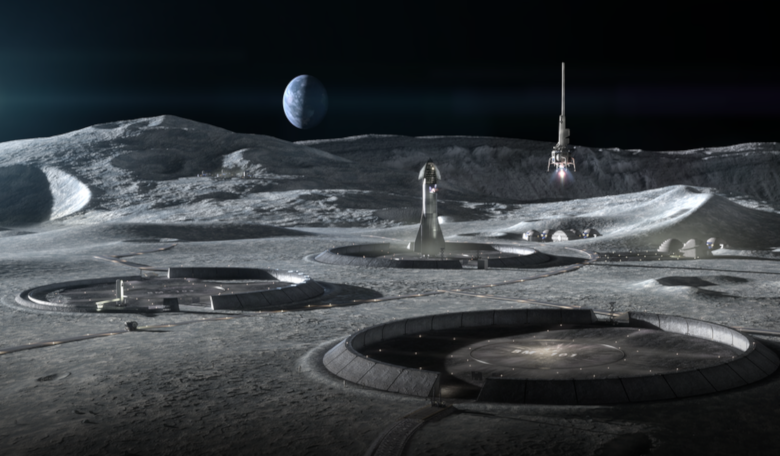Construction technology company ICON, has received funding from NASA to start development of an off-world construction system that could support a sustainable, long-term presence on the Moon.
Known as “Project Olympus”, the private firm has teamed up with NASA’s Marshall Space Flight Center under the Moon to Mars Planetary Autonomous Construction Technologies (MMPACT) project, to test lunar soil simulant with various processing and printing technologies that could one day be used on the Moon to build in situ infrastructure.
“From the very founding of ICON, we have been thinking about off-word construction, its a natural progression,” Jason Ballard, ICON founder/CEO said. “Building humanity’s first home on another world will be the most ambitious construction project in human history and will push science, engineering, technology, and architecture to literal new heights.”
The US space agency’s Artemis programme is not just about landing the first woman and next man on the Moon by 2024 – they also want to stay a while too.
Plans for a lunar terrain vehicle, habitable mobility platform or lunar RV, and surface habitat on the Moon by the end of the decade are under discussion by NASA; ideas that could include large-scale construction systems with excavation robots to help astronauts out.
But, with incredibly abrasive dust that clings to everything, 500 degree temperature variations and extreme radiation, our nearest celestial neighbour is a not a place to be taken lightly when it comes to establishing hardy moon bases.
Lunar structures will need to be extremely robust and provide suitable thermal, radiation, and micrometeorite protection for off-world settlers. And, to be sustainable and cost effective, ideally indigenous materials will need to be used rather than transported from Earth – this rules out metal and inflatable constructed habitats.
The Texas based company, which built the first permanent 3D printed home in the US, say to meet these requirements they are developing entirely new technologies to operate in this environment that could also help improve life on Earth.
“I am confident that learning to build on other worlds will also provide the necessary breakthroughs to solve housing challenges we face on this world. These are mutually reinforcing endeavours. Sometimes, for the biggest problems, it becomes necessary to look up at the sky and not only down at our feet.”
To join them in this audacious project, ICON have enlisted the help of two award-winning architecture firms as partners; BIG-Bjarke Ingels Group and SEArch+ (Space Exploration Architecture).
BIG has worked on multiple concepts for the Moon and Mars in the past several years, while SEArch+, who are known for their innovative ‘human-centered’ designs for space exploration, has over a decade-long association with NASA’s Johnson Space Center Human Habitability Division.
“With ICON we are pioneering new frontiers – both materially, technologically and environmentally” says Bjarke Ingels, Founder and Creative Director, BIG-Bjarke Ingels Group. “Ensuring the safety of astronauts is primary to our work at SEArch+. As architects and designers, we strive to create aspirational spaces that enrich and celebrate human life. We are thrilled to support “Project Olympus” and come one step closer towards becoming an interplanetary species.”
ICON and SEArch+ are no strangers and have already competed against each other in NASA’s 3D-Printed Habitat Competition.
The challenge, which started in 2015 and was structured in phases, each with multiple levels, awarded recipients prize money for creating sustainable shelters suitable for the Moon, Mars or beyond using resources available on-site in these locations.
The “prize” this time around however could be out-of-this-world, as based on the progress, NASA could award ICON additional funding and explore the opportunity of an on-site test on the lunar surface.











